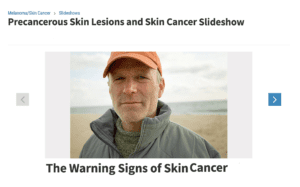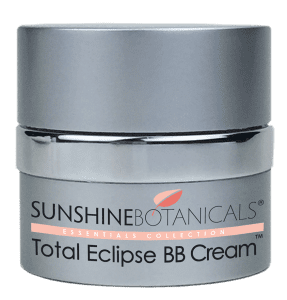
Balance, common sense, and practicing “safe sun” is important at this time and since this is Melanoma Awareness Month, I wanted to do some myth-busting and provide you with some very important information and resources so you can make more informed decisions about protecting your skin from damaging and aging UV rays and protecting your family in the process.
There is so much confusion surrounding sun protection and skin health, I want to provide facts you need to understand to prepare for the summer season. This being said, it is vitally important to know what sun protection is a year-round necessity, regardless of the climate or region you live in. UV light is penetrating to the skin-damaging even on cold and cloudy days. This is not to make you paranoid, just aware that you can experience damaging UV rays 365 days of the year – not just during warm summer months.
Let’s look at the facts…
- An estimated 90 percent of skin aging is caused by the sun.
- People who use SPF of 15 or higher show 24 percent less aging than those who do not wear sun protection.
- Sun damage is cumulative. 23 percent of lifetime exposure occurs by age 18.
Now Let’s look a little deeper…
Did you know how much UV-related aging and damage accumulates at the different stages of our life?
| Ages | Average Accumulated Sun Exposure* |
| 1-18 | 23 percent |
| 19-40 | 47 percent |
| 41-59 | 74 percent |
| 60-78 | 100 percent |
| *Based on a 78-year life span | |
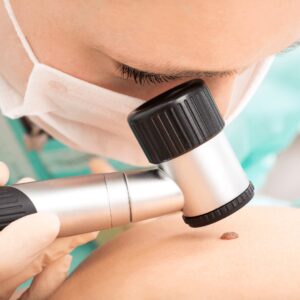
Skin cancers — including melanoma, basal cell carcinoma, and squamous cell carcinoma — often start as changes to your skin. They can be new growths or precancerous lesions – changes that are not cancer but could become cancer over time. An estimated 40% to 50% of fair-skinned people who live to be 65 will develop at least one skin cancer. Learn to spot the early warning signs. Skin cancer can be cured if it’s found and treated early.
 There are 4 main types of skin cancer:
There are 4 main types of skin cancer:
- Basal cell carcinoma – Basal cells are the round cells found in the lower epidermis.
- Squamous cell carcinoma. Most of the epidermis is made up of flat, scale-like cells called squamous cells.
- Merkel cell carcinoma is a rare and aggressive skin cancer occurring in about 3 people per 1,000,000. Primary small cell carcinoma of the skin, and trabecular carcinoma of the skin.
- Melanoma – Melanomas present in many different shapes, sizes, and colors. That’s why it’s tricky to provide a comprehensive set of warning signs.
Precancerous Skin Lesions and Skin Cancer
For this reason, I want to provide you with an excellent resource that can help you recognize suspicious lesions so you can get to your dermatologist for proper evaluation/ diagnosis in a timely manner for your safety and protection. Too much “fun in the sun” without protection can be deadly. Since detecting melanoma early is so vital, we’ve provided common signs, symptoms, images, and early detection strategies for click the image below to view a slide show of images from WebMD:
What about people of color? Can black people get melanoma?
Skin cancer is definitely less common for people of color but sadly when it occurs the prognosis tends to be worse as issues are often detected at a more advanced stage. The Skin Cancer Foundation cites one study which found that the five-year survival rate for people of color was 65%, versus 90% for white people.
People of color tend to get skin cancer less as they have higher levels of melanin which acts as a natural defensive barrier to UV. However, lower incidence rates result in people of color being less likely to check their skin for suspicious lesions, wear a high SPF sunscreen or UPF 50+ sun protective sun hats or clothing.
Another challenge is that skin cancers can be harder to detect due to the pigmentation of carcinomas. Also, and for a reason that remains unknown to the experts, skin cancers on people of color are often found on the extremities (feet or hands) which can be difficult to detect. Tragically, Bob Marley died aged 36 due to melanoma from under his toenail.
The important takeaway is that everyone is at risk of sunburn, skin aging, and skin cancer irrespective of their skin color. Dermatologists recommend that people of color self-examine their skin once a month and get a skin check once a year.
What to Do – What to Do???
Cover Up!
Clothing can provide a great barrier against the sun’s ultraviolet (UV) rays. Its protection is consistent over time and doesn’t wear off as sunscreen does. Many new fabrics offer high-tech protection and breathability, too. The more skin you cover (high neck, long sleeves, pants), the better, and a hat with a wide brim all the way around (three inches or more) is best because it helps shade your eyes, ears, face, and neck. Also, wear UV-blocking sunglasses to protect your eyes and the skin around them.
What does UPF mean? Look for UPF, which stands for ultraviolet protection factor, on labels for clothing, hats, and fabrics. The number indicates what fraction of the sun’s UV rays can penetrate the fabric. A shirt labeled UPF 50, for example, allows just 1/50th of the UV radiation to reach your skin.
The pitfall: Any clothing leaves some skin exposed, so you need sunscreen, too. Don’t forget to apply it to your hands, especially after washing them. One of my favorite clothing resources for UV protective clothing is Coolibar.
The best sun protection is the one you wear.
Know Your Sunscreen
Sunscreens come in many formulations and delivery methods, and it can take trial and error to find the one you like best. Whether it’s a sport spray, an easy-to-use stick, or a rich moisturizer with antiaging ingredients, the best sunscreen is the one you will use every day.
SPF stands for sun protection factor. The number tells you how long the sun’s UVB rays would take to redden your skin when using a particular sunscreen compared with the amount of time without sunscreen. So if you use an SPF 15 product exactly as directed (applied generously and evenly, and reapplied after two hours or after sweating or swimming), it would take you 15 times longer to burn than if you weren’t wearing sunscreen.
Broad Spectrum. The words “broad spectrum” on a label indicate that the sunscreen contains ingredients that effectively protect against UVA rays as well as UVB.
Water Resistance. While sunscreens can’t claim to be waterproof, they can be labeled water-resistant for either 40 or 80 minutes. Yes, you can burn even when you’re in the water, so reapplying is key!
Sensitive skin. Products containing zinc oxide and titanium dioxide sometimes referred to as mineral or physical formulas, may be less likely to cause skin irritation in people who have sensitive skin. This is why we created our ultra-pure Total Eclipse! High levels of zinc and titanium dioxide in this chemical-free, antioxidant-rich day cream are ideal for daily environmental protection.
Sun Damage vs Cancer-Causing Sunscreens? Which is worse?
What to Use – What to Avoid
Benzophenone-3, also known as Oxybenzone
A very common ingredient in FDA-approved sunscreens. Very effective at reducing UV exposure, it is also classified as a hazardous irritant for eye contact and slightly hazardous for direct skin contact. (https://www.spectrumchemical.com/MSDS/B3409.pdf). This ingredient penetrates the skin and is also used to help other chemicals penetrate the skin. According to the Center for Disease Control (CDC), 97 percent of Americans have this chemical circulating in their bodies. Also listed as a direct cause of coral bleaching by Robert Davanero et al – there is a strong cause to avoid all products using this ingredient:
Other ingredients to avoid include:
- Avobenzone, also a benzophenone
- Cyclopentasiloxane / Cyclomethicone
- Formaldehyde, Diazolidinyl urea, Quaternium-15, DMDM Hydantoin, and Hydroxymethylglycinate
- Methylisothiazolinone
MYTH: Sunscreen is for the beach and summer months..
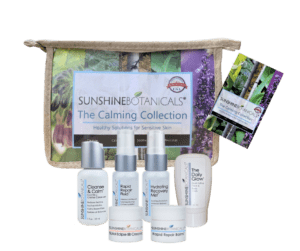
My passion for finding healthy ingredients for all skin challenges is what drives me, and as a result, I have uncovered some impressive ingredient research I want to share with you…the extract of White Birch Bark (betulinic acid) is a powerful anti-aging ingredient we use in our Calming Skin Collection that has some serious research to back it up. The science of plant medicine is incredible and wanted to share this with you. Our commitment to source the finest most potent ingredients and raw materials for our products is what our reputation is built on and more powerful plant products are in development…stay tuned and have a happy and safe summer!
My Passion is Your Solution
Resources:
SkinCancer.org
Web MD
Skin Cancer Foundation
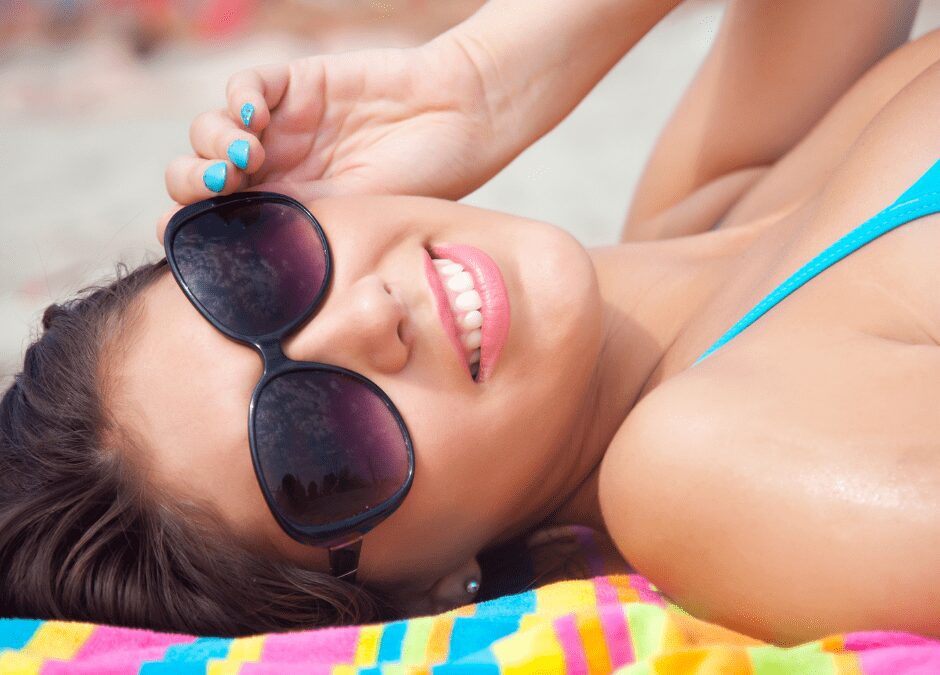
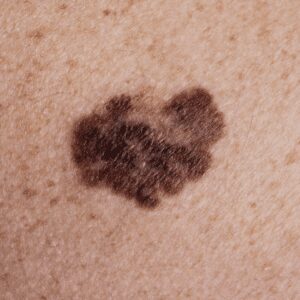 There are 4 main types of skin cancer:
There are 4 main types of skin cancer: